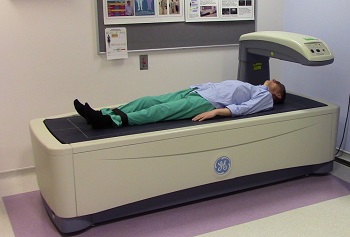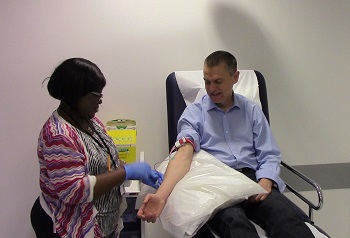Questionnaires
- Medical History
- Diet
- Physical Activity
- General Lifestyle
Measurements
Clinical Measurements
- Blood Pressure
- Electrocardiogram (ECG).
Body Composition
- Height, weight, hip and waist circumference was measured
Physical Measurements
- Hand grip strength of both hands to assess muscular strength
- Cardiorespiratory fitness. Participants were asked to rest by lying on a couch for 10 minutes. During this test we measured their resting energy expenditure by monitoring the air that they breathe. If they eligible, they were then asked to walk on a treadmill for 16 minutes and if they could, to jog for 4 minutes. Alternatively, they were asked to perform a self-paced walk test
Physical Activity
- Physical activity was monitored in the week following the visit. Participants were given a combined heart rate and movement sensor weighing less than 10 grams, to wear continuously for 6 days and nights and then return by freepost
- Participants were asked to wear one or two additional monitors; a Global Positioning System Receiver (GPS) which could be worn discreetly on the waist and/or an accelerometer that was worn on the wrist
- Following the measurement period, participants had the opportunity to annotate information about the context of their own data using the Annotation Tool. A video introduction to the Annotation Tool can be found on the link https://youtu.be/7v7ivI0H11M.
Blood Tests
- Blood samples were taken to measure fasting blood glucose and fat (lipid) levels, and an oral glucose tolerance test performed. Participants consumed a harmless sugary drink and their response to the glucose in the drink was assessed through another blood sample taken 2 hours later. If they had been diagnosed with diabetes since their first visit they were still eligible to take part, however, only took an initial blood sample and they did not need to consume the sugary drink
- In Phase 2 we also invited some participants to donate a blood sample for the generation of induced pluripotent stem cells (iPSCs) for research purposes. These cells are induced from circulating white blood cells, and the different experimentally derived cell types will be used to investigate pathways that link our genetic profiles with metabolic disease. The cells generated will not be of direct benefit to participants or anyone else in the treatment of disease and will only be used for experimental research purposes



 MRC Epidemiology Unit
MRC Epidemiology Unit